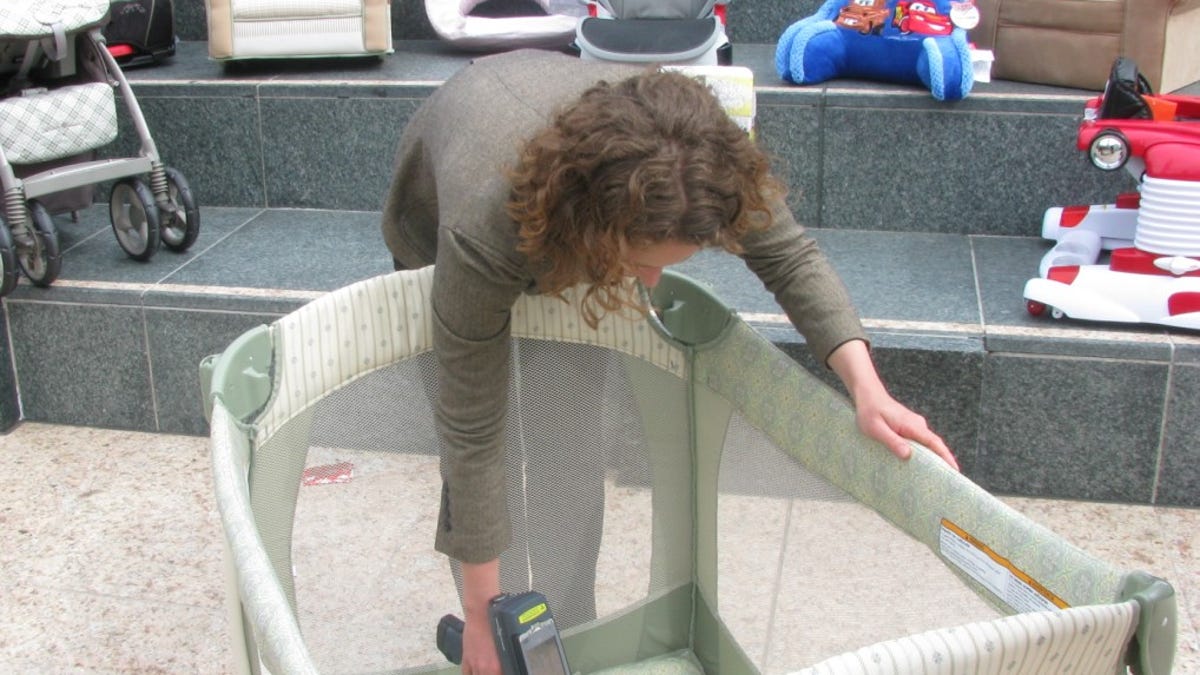Baby cribs, computers share toxic traces
Children's cribs, strollers, and car seats in California are rife with toxic flame retardants also found in consumer electronics, according to Friends of the Earth.

SAN FRANCISCO--Nearly one-third of children's car seats, cribs, and strollers in California contain toxic chemicals tied to cancer, learning disorders, and infertility that are also common in consumer electronics, according to a report Tuesday by Friends of the Earth.
The nonprofit group's study, "Killer Cribs," found higher levels of halogenated flame retardants in the 150 baby products and 350 furniture items it tested from California stores than in reported rates from other states.
California standards require children's products classified as furniture to contain flame retardants. At a press event in downtown Union Square, state Assemblyman Mark Leno promoted a bill (A.B. 706) that would phase out the fireproofing ingredients. He and other supporters hope that if the bill passes, it will set a market precedent the rest of the country will follow.
Friends of the Earth campaigner Sara Schedler pointed an X-ray fluorescence gun at a car seat to show traces of bromine, indicating that fireproofing chemicals made up more than 10 percent of the seat's weight.
Polyeurethane foam padding in car seats, cribs, walkers, bassinets, and baby carriers was found laced with halogenated flame retardants.
"They go from the TV or crib or stroller into the dust, and the dust goes into the bodies of children and pets and stays there," said Arlene Blum, a chemist at the University of California at Berkeley. "The chemicals should not be used without testing," she said. "No data? No market."
It's unclear whether trace amounts of such chemicals wreak havoc on human health, but watchdog groups warn that the pollutants are so pervasive that even tiny amounts build up to a potent "body burden" over time.
Environmental groups want to see more benign alternatives, such as natural latex rubber foam or woolen mattresses. Scientists pushing innovations in "green" chemistry are exploring phosphate-based fireproofing chemicals.
Flame retardants such as polybrominated diphenyl ethers, or PBDEs, are found in the breast milk or blood of most North Americans, according to the Environmental Working Group. They're also in polar bears and other animals, including fish sold in grocery stores.
In the early 1990s, Sweden became the first country to phase out such flame retardants. The European Union is following suit. Rules there since 2006 have forced electronics makers to stop using certain brominated flame retardants and heavy metals, including mercury, in global product lines. A national U.S. equivalent to the Restriction of Hazardous Substances rules does not exist.
Makers of consumer electronics, including Dell, Intel, Apple, Sony, and Panasonic, have moved to eliminate the flame retardants. But that leaves legions of older products--such as some 80 million analog televisions bound for landfills next year.
The chemicals in question became widespread when the EPA banned the use of other halogenated flame retardants, polychlorinated biphenyls, or PCBs, in 1978. Smoking cigarettes, a common cause of household fires, was still popular. So, too, were large TV sets that doubled as shelves for candles and flammable items, increasing the risk of fire accidents.
Flame retardants within electronics tend to be bonded chemically within circuit boards and components, making it less likely for them to escape, according to chemists. That's not necessarily the case for the plastic casings of televisions, computers, and monitors.
As televisions heat up, they may leach the chemicals as a gas and pollute indoor air, according to an April study of 19 homes by Boston University.
Household dust is a major source of pollution from flame retardants, according to various studies.
Veterinarians who saw few endocrine disorders in cats several decades ago now describe an epidemic. The Environmental Protection Agency has linked thyroid disease to PBDE flame retardants, believed to be ingested by cats as they groom themselves.
On the other hand, chemical makers accuse green groups of using scare tactics to inflate potential threats posed by flame retardants, which they call necessary for public safety.
Halogenated fire retardants are supposed to prevent deaths and injuries. There have been more potentially preventable fires in Europe than in the United States since halogenated flame retardants became popular.
However, firefighters appear to be suffering increasingly from rare cancers that could be tied to inhaling flame retardants, which release a form of dioxins if burned.